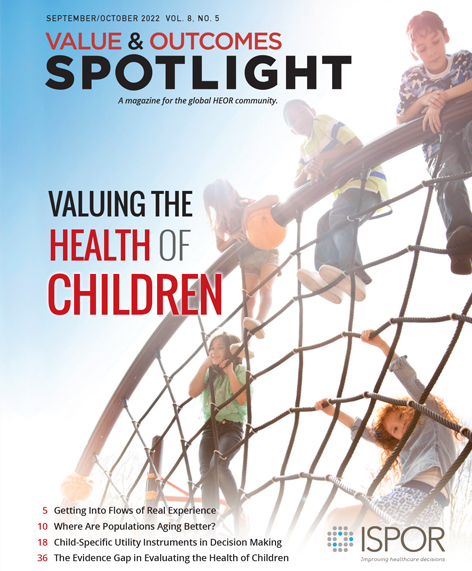Valuing Health for Children
 Ensuring appropriate treatment options and preventive measures such as vaccinations are important for children’s health and their future. Because these treatments can be expensive and healthcare systems have limited budgets, we need to ensure children and adolescents are receiving the most effective treatments that are also cost-effective. Securing appropriate healthcare for every child in need requires generating evidence and data by utilizing appropriate methods to determine the value to place on a child’s health.
Ensuring appropriate treatment options and preventive measures such as vaccinations are important for children’s health and their future. Because these treatments can be expensive and healthcare systems have limited budgets, we need to ensure children and adolescents are receiving the most effective treatments that are also cost-effective. Securing appropriate healthcare for every child in need requires generating evidence and data by utilizing appropriate methods to determine the value to place on a child’s health.
Multiple pediatric generic patient-reported outcome instruments are available by age with the more frequent ones including DISABKIDS, PedsQL, CHQ, CHIP, KINDL, and KIDSCREEN. Despite the availability of these validated tools, very limited data on children’s and adolescents’ health related quality of life (HRQoL) are being generated and are available for review by health technology assessment (HTA) authorities. This creates a gap in evidence, which limits our understanding and ability to appropriately place value on children’s health. In addition, HTA authorities have not provided clear guidance on how to measure and value children’s HRQoL, apart from NICE which has done the most in this space. However, there is lack of consensus among HTA bodies and without clear guidance or frameworks, uncertainties and methodological challenges in conducting economic evaluations in children will remain.
In this issue of Value & Outcomes Spotlight, Wendy Ungar, MSc, PhD, highlights the key challenges to conducting economic evaluation in children which include:
- the inability to measure preferences for health states in infants, toddlers, and very young children reliance on proxies;
- the need to consider changes in resource use and health state preferences for different age groups as children mature;
- modeling costs and health consequences over the lifetime;
- using different approaches or instruments for generating utilities in different age groups;
- effects of discount rates when up-front costs are high, and benefits are deferred or accrue over many decades; and
- the need to incorporate the costs and consequences of spillover effects on caregivers and family members.
Although much progress has been made in valuing children’s health, additional work is needed to further understand the preferences of children and adolescents and how to value their health appropriately. Methods used to value children’s health certainly need to be improved. Methods can be employed that actively involve children in the process, taking into account their views and perspectives where possible. Patients, families, caregivers, and the public should be directly engaged to ensure their perspectives are included to capture a societal perspective. There is also an immediate need to develop consensus among HTA bodies, academia, and relevant stakeholders to develop guidelines and HTA evaluation processes. The ISPOR Emerging Good Practices Task Force on pediatric HRQoL values, planned for later this year, will also help to advance consistent and improved practices.
As always, I welcome input from our readers.Please feel free to email me at zeba.m.khan@hotmail.com.
Zeba M. Khan, RPh, PhD
Editor-in-Chief, Value & Outcomes Spotlight

